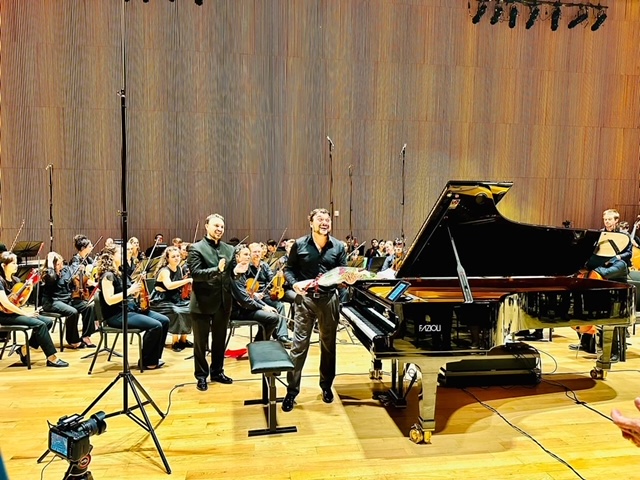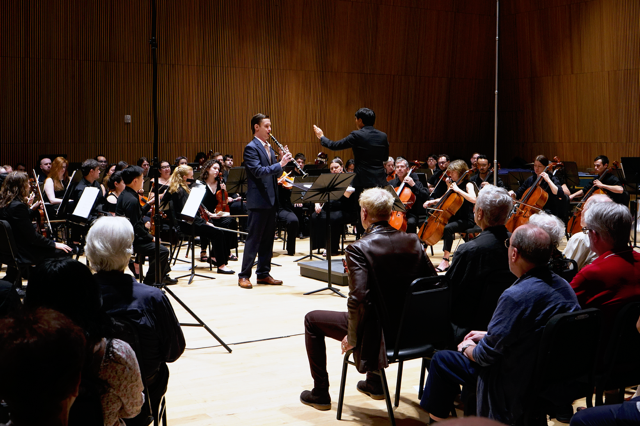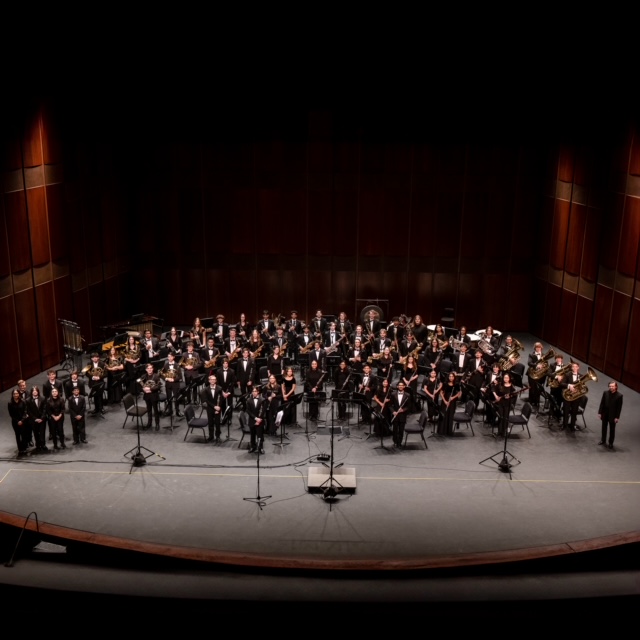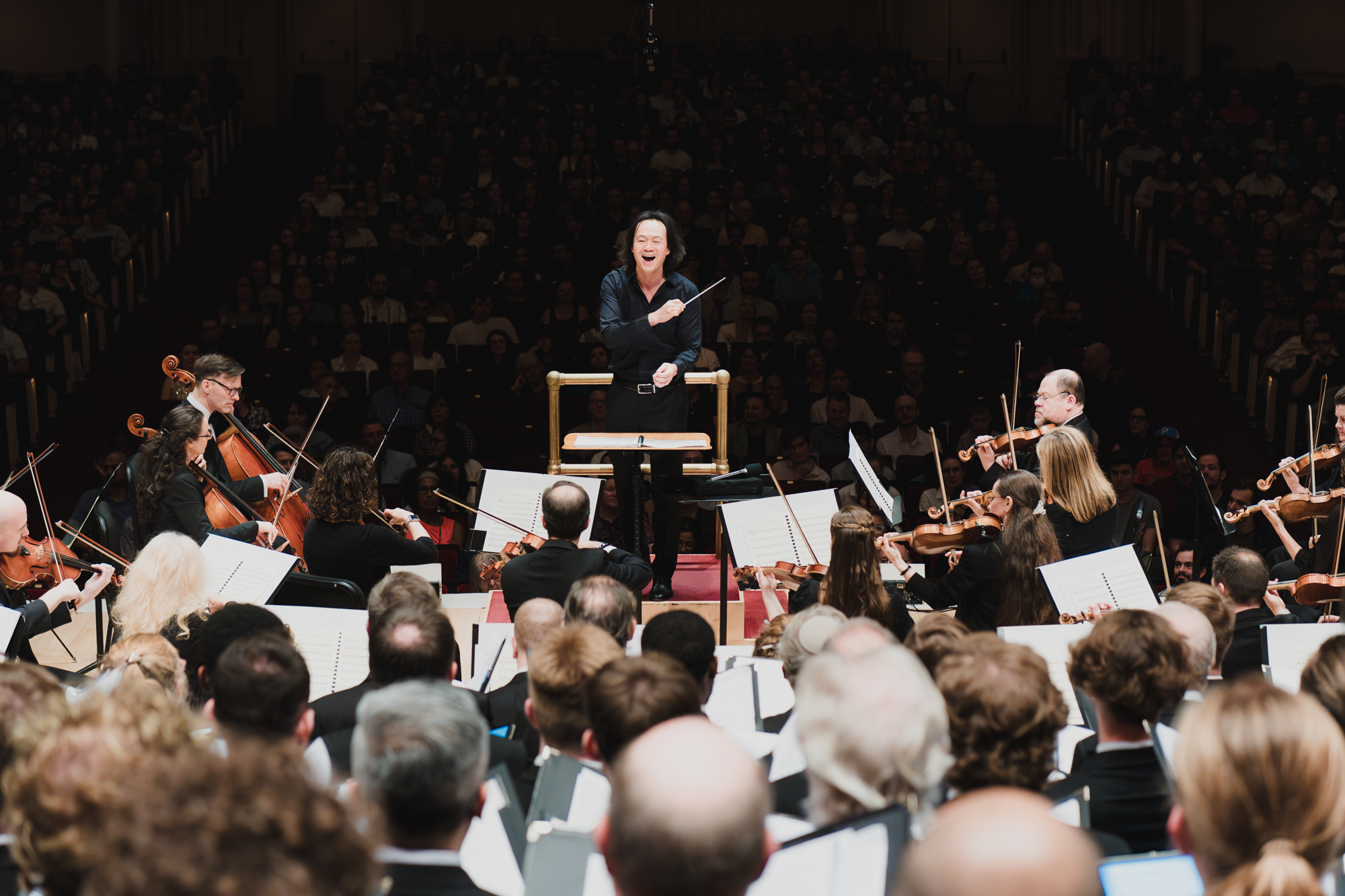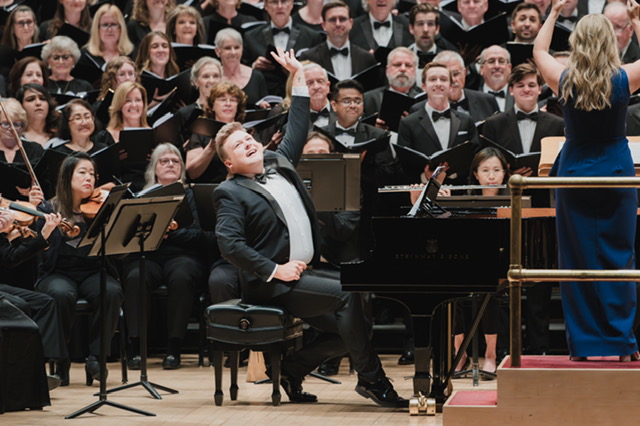Lone Star Youth Winds
Andrew Trachsel, conductor
Stern Auditorium at Carnegie Hall, New York, NY
June 13, 2024
One often hears and reads about the lamentable state of music education in our country today. Budget cuts which decimate programs that are already struggling to get by, and a seemingly designed intention to minimize the impact of early music education are all very real problems in today’s world. Evidently, Texas did not get the memo, as they are not only thriving, but setting the standards of excellence in music education for all to aspire. There is strong support at all levels, the programs are highly esteemed and a source of state pride, and the young musicians are treated as serious, and not as hobbyists or dilettantes. The Lone Star Youth Winds (LSYW), who blew into Carnegie Hall on June 13, 2024, to deliver a performance that would have been the envy of most band programs, is a prime example of what the Texas model produces.
The LSYW is a featured education program of the Lone Star Wind Orchestra (LSWO). The LSYW is made up of the most outstanding high school (grades 9-12) musicians in Texas. They are placed in a professional environment, with interaction with composers and renowned musicians, and intense sectional instruction from professional musicians. Led by Andrew Trachsel, it would probably be most accurate to liken the LSYW to something between a state honor band and a college level wind ensemble.
Their program, entitled In Two Places, consisted of three segments – first New York, New York, then a segment entitled In Two Places, and finally Texas, our Texas. Each segment had three works. The printed program included a QR code to access the notes, a sixteen-page booklet with detailed information about the works and the composers, which I highly recommend the reader to access: Program Notes.
Before going on, I want to mention a few things that I liked very much, and a few things that I feel are opportunities for this fine group to solidify their stature. First, the good: The listing of the players in the roster alphabetically “as all players are equally essential to the success of this concert” delighted me, not only because it emphasizes the ensemble element, but because it is a truth that almost is never spoken aloud. Having the soloists stand after each piece in itself is not remarkable, but it was done here not as an afterthought or routine, but to give the audience the chance to recognize them and give them a response worthy of their fine playing (and this audience was first-rate in the support and enthusiasm department). Opportunities to refine: There is no need to tune after every single piece, this is something that I would associate with low-level ensembles, which the LSYW is definitely not! Musicians of this caliber can and should be expected to adjust “on-the-fly” as needed. Also, I am puzzled by the conductor leaving the stage after every single piece. I would have expected this only at the close of each segment. It seemed excessive and did not really enhance anything. Mind you, these concerns had no negative impact on the performances themselves.
On to the music. Conductor Andrew Trachsel took the stage for Part I: New York, New York. All the works have some New York connection (read the notes!). Without much ado, he pushed the accelerator to the floor as the LSYW launched JoyRiDE, by Michael Markowski (b. 1986). This work is a mash-up of Beethoven’s Ode To Joy and John Adams’s Short Ride in a Fast Machine. It’s whimsical insanity, and the LSYW captured the spirit and the maniacal energy with perfection. It was a terrific opener!
After this, it was a good choice to dial it back, and this took the form of A Simple Song, from Leonard Bernstein’s Mass. The best way I could describe this reading was that it was sincere. The ensemble balance was tight, the climaxes were rendered naturally without overdoing it (which is also due to the skill of Maestro Trachsel), and special kudos are in order for the nice trumpet solo work.
The final work of this segment was Robert Sheldon’s (b. 1954) Metroplex: Three Postcards from Manhattan. Mr. Sheldon writes about Metroplex: “A music portrait of Manhattan’s cityscape, Metroplex opens with a vision of the New York City skyline, evoking looming buildings and concrete canyons. From there, the melody travels to the heart of an urban jazz scene, characteristic of the city’s famous night clubs. Finally, the piece takes us on a wild taxi ride through the heavy traffic of a bustling metropolis. The skyline is seen once more as we leave Manhattan, hopefully to return again soon.” It is brash and loud (of course!) and teeming with unlimited energy. Some listeners have detected influences (e.g., William Schuman’s George Washington Bridge, and Earl Hagen’s Harlem Nocturne), and I would add Slaughter on Tenth Avenue and On The Town to that list, not as any accusation of plagiarism, but hooking the listener with familiar references in a different way. It was a delightful romp to end this segment (and may your taxi rides not be anything like this!).
Moving on to Part II: In Two Places. Suite No.1 in E-flat, by Gustav Holst, opened. Holst is one of the founding fathers of wind ensemble (band, if you must) music, who is still a role model for composers today. This work is a masterpiece that is a must-play for any ensemble that aspires to be considered top-notch. Accordingly, the expectation bar is set high, and there are so many outstanding performances out there to hear, that it is a high-risk proposition to program this work. How did the LSYW measure up? As a whole, very well. Fantastic job tuba section in the opening Chaconne, and I liked the driven, but steady “push, push” quality in the Intermezzo and the vigorous ensemble playing in the finale, March. There was some shaky intonation in the trumpets that I am not going to let slide – that’s the downside of being at a high level. I might have let this pass unmentioned for a less talented group.
Next up was In Two Places, by Haley Woodrow (b. 1984). As Ms. Woodrow writes, the title is both an allusion to her double-life as a musician (performer and composer), feeling “in two places at once,” and the composition’s “struggle” between major and minor modes, but both with similar underpinnings (e.g., eighth-note “motor”). There is also a clear homage to Holst’s E-flat suite. In Two Places was the winner of the 2019 Women’s Band Composition Contest, led by Shannon Shaker. It is a worthy addition to the repertoire, and the LYSW made the most of the built-in lyricism and soaring melodies to deliver a memorable performance that could be a role-model for other ensembles.
The last work in this segment was the world premiere of Eleanór a Rún, by Julie Giroux (b. 1961). The program listed Ms. Giroux as guest conductor, but she was not in attendance, and it was not announced why she was absent. Eleanór a Rún is a love song composed in the 16th century and recognized as part of the traditional Irish repertoire of unaccompanied ballads known as sean-nós song (the term sean-nós means “in the old way”). The origin of sean-nós singing is unknown, but researchers suggest that it probably dates back to at least the 13th century.
Clarinetist Sophia Kidwell came to the front of the stage and sang the original tune, with some lower woodwinds approximating the drone of bagpipes. If Ms. Kidwell tires of clarinet, she has a future as a vocalist, her voice was absolutely enchanting! After returning to her seat, the performance proper began. Maestro Trachsel led with a sensitive touch. After one verse, harmonized by Ms. Giroux, she decided to complete the story, with the singer successfully courting Eleanór, winning her hand in marriage, and live a happily life until death as soul mates. Ms. Giroux is a composer of great skill and a master musical storyteller. We all fell in love with Eleanór through her writing. The LYSW played this poignant love story with a reverence that reflected a maturity far beyond their years. It is regrettable that Ms. Giroux was not in attendance, both to witness this remarkable performance and to receive the applause that was so richly deserved.
Part III: Texas, Our Texas was all about composers with strong ties to Texas. All Things So Wondrous, by William Owens (b. 1963) opened. Mr. Owens writes, “To date, Lobe den Herren (Praise to the Lord, the Almighty) endures as one of the world’s most beloved and frequently sung hymns. The original text comes by way of 17th century author Joachim Neander (1650-1680), while the melody is likely derived from German folk music. Taking its title from the second verse of the hymn, All Things So Wondrous fuses the familiar melody with original material culminating in a vibrant work for today’s concert band. The attacks were well-articulated in the opening, the middle section had an extraordinarily rich harmonic setting, and the “fugal” finish was stirring.
Twilight in the Wilderness, by Christopher Tucker (b. 1976), followed the Owens work. Twilight in the Wilderness is a musical impression of the paintings of Frederick Edwin Church, specifically his painting Twilight in the Wilderness. The work opens with a recording of bird calls, which brought to mind Einojuhani Rautavaara’s Cantus Arcticus (a work I love), but that is only a passing similarity. Twilight in the Wilderness is pastoral to the core, and there are episodes of great beauty that were played with a naturalness that was captivating. The woodwinds were especially vibrant. Mr. Tucker was in attendance, and came to the stage to accept the congratulations of Maestro Trachsel and the audience for his masterful work.
Last, but certainly not least in this segment (and the concert), was Symphonic Dance No. 3, Fiesta, by Clifton Williams (1923-1976). Clifton Williams is one of the immortals of wind ensemble music; his music is still as fresh and impactful today as it was when first performed, and his legacy lives on in many of his students who began luminaries of the wind ensemble composing world. If there ever was a Mount Rushmore for wind ensemble composers, Clifton Williams would be there (you can fight amongst yourselves as to the other three).
This work is an undisputed classic. It is filled with the sounds of Mexico, street bands, bull fights, vibrant colors, and the pride of the Mexican people that are as much a part of Texas as they are of Mexico, but all with the unmistakable “Williams” sound (and not John!). As much as I enjoyed everything, this performance simply was head-and-shoulders above what preceded it. It was as if the LSYW had found a new level of excitement and energy. If it were a race car before, it was a rocket ship now. In a word, WOW! The audience seemed to sense the same and erupted into a standing ovation. Well done, LSYW, I look forward to following your future successes.
by Jeffrey Williams for New York Concert Review; New York, NY




